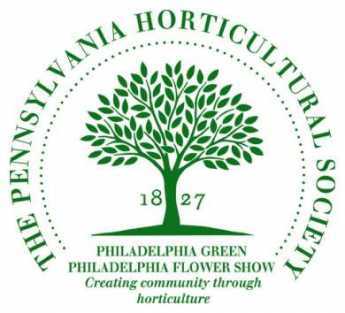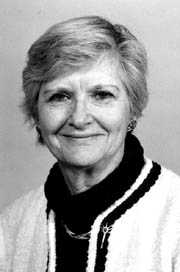Related Topics
Franklin Inn Club
Hidden in a back alley near the theaters, this little club is the center of the City's literary circle. It enjoys outstanding food in surroundings which suggest Samuel Johnson's club in London.
Volunteerism
The characteristic American behavior called volunteerism got its start with Benjamin Franklin's Junto, and has been a source of comment by foreign visitors ever since. It's still a very active force.
Cultural
Culture and Traditions (2)
Gardens Flowers and Horticulture
Gardening, flowers and the Flower Show are central to the social fabric of Philadelphia.
The Garden Show Evolves
Adam Levine, who is the unofficial authority on the Philadelphia garden scene, has written elegant books about The Flower Show, and about the larger gardens in the region. At a recent luncheon meeting at the Franklin Inn, he traced the evolution of the Flower Show.

|
| The Pennsylvania Horticultural Society |
The Pennsylvania Horticultural Society was founded in 1827, and it organized the first Flower Show in 1829. For a century it was only an amateur display, very similar to the sort of local garden club display found in many towns and villages in England. The timing of such shows is dictated by the booming season of the flowers of the region, so the display depends on the dates of the local flowers, related in turn to soil and weather conditions. In the early part of the Twentieth Century, W. Atlee Burpee became the dominant force in the Philadelphia show. The show established a long tradition of domination by seed companies and nurseries, with elaborate displays which often took a week to set up, preceded by months or years of planning. The central difference in the nature of the Philadelphia show was that plants were forced into bloom, so much of its impact depended on displays which were seemingly entirely out of season. After World War II, Ernesta Ballard became the moving and controlling force, driving The Show into enormous popularity in the new larger quarters at Convention Hall. Considerable revenue was generated and used to beautify Philadelphia. The Show became the biggest, best, most popular and best funded flower show in America. Ernesta was a success.

|
| Mrs. Ballard |
Gradually, the most elaborate or dominant displays were put on by florists, using cut flowers. That was not necessarily Mrs. Ballard's original intention, although it might have been. It is the nature of plant nurseries to take away a ball of topsoil when they sell a plant, and that tends to dictate the location of the major nurseries in places where farmers are willing to ruin the land for farming, looking to speculate on suburban development. They thus are usually rural or exurban, because prime farmland is too expensive. Obviously, nurseries are pressed outward from the rim of the expanding city, and may even be forced to locate at a considerable distance away. These realities of the business tend to diminish the local loyalties of the nurseries and the city to each other. Mainly, cut flower arrangements resisted this trend by using greenhouses, but air freight has now made it possible for exhibitors of live plants to come from the Netherlands, Peru, and even Korea. The Flower Show is still held in Philadelphia, but it is much less a product of Philadelphians, especially amateur Philadelphians. When large single exhibits now can cost $100,000 apiece to organize, it is not surprising that the Philadelphians who do exhibit, are members of the upper crust.
And then there are those unions. While upper crust exhibitors can afford to pay full union wages for an electrician to plug in one electrical outlet, they are instantly offended by the whole featherbedding experience of being forced to do it. And since a great many blue collar union members are hostile to any suggestion that these gentleman farmers are in any way their social superiors, they can display what is known as an attitude. Philadelphia is famous for aggressive unions, and the Convention Center is additionally notorious for unions with political clout. Somehow, the politicians in charge of this unfortunate passive-aggressive scene get control of it and are seen to get control of it. After all, snooty exhibitors are occasionally in a position to move whole factories out to the suburbs, to the general injury of the city; moving a flower show wouldn't be too hard to do. The paradox is that 70% of these union members live in the suburbs themselves. The Flower Show cannot run without the enthusiastic help of 3500 volunteers, easily turned off by muscling them. The judging is done by 175 volunteer judges from all over America, coming to Philadelphia at their own expense, for example.
The Flower Show has had memorable moments. There was a time when the Shipley School consistently won most of the prizes. There was a famous episode when the Widener Estate of Linwood had a world-famous Acacia display. When it was broken up, there was an uproar when it was given to Washington DC, instead of staying right here where it belonged. Now, the gossip is about exhibitors from Ukraine, or from Japan, making little laughable mistakes about local geography with many streets named One Way.
The Show goes on and thrives. But just what its future is going to be is unclear. The Convention Center has doubled its space, but whether it can double its business is uncertain. And the management has recently changed from leadership which had a focus on the show and regarded city beautification as something to do with left-over profits, to leadership with a primary interest in the beautification of the city. No business will thrive if it neglects its revenue stream. So, please be careful with our nice Flower Show.
REFERENCES
| Standardized Plant Names: American Joint Committee on Horticultural, Frederick Law Olmsted | Google Books |
Originally published: Monday, March 03, 2008; most-recently modified: Friday, May 31, 2019